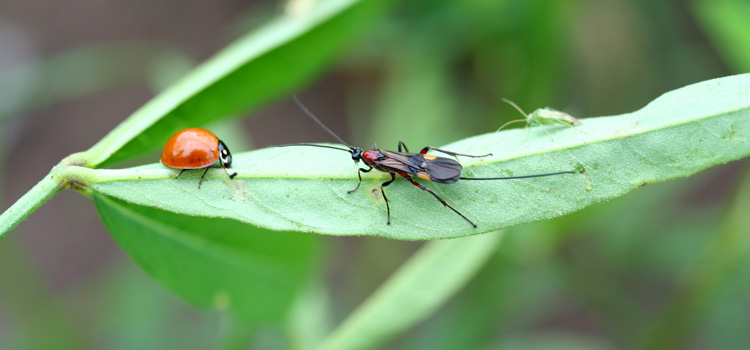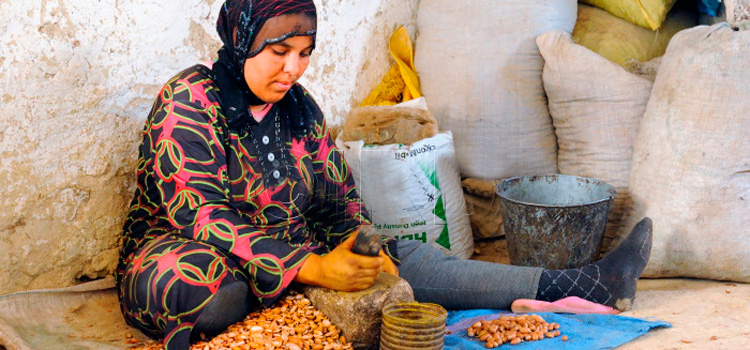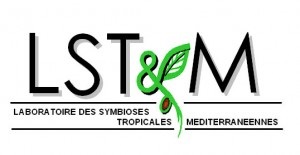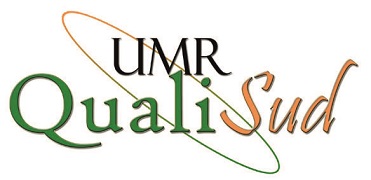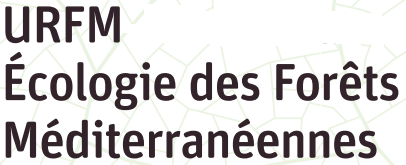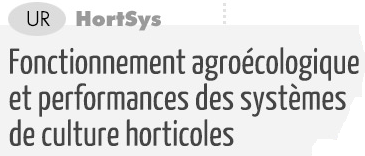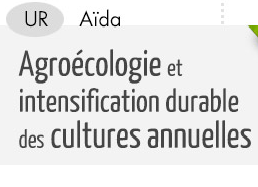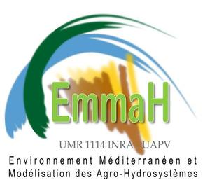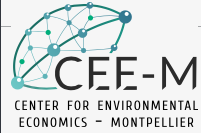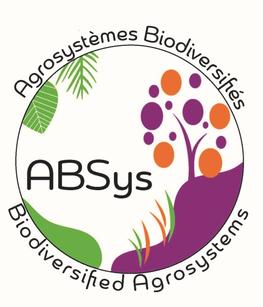Agropolis Fondation est une Fondation de coopération scientifique porteuse d’un réseau scientifique pluridisciplinaire. Elle rassemble un continuum de connaissances scientifiques sur les plantes : du gène jusqu’aux agro-écosystèmes et à l’utilisation finale des plantes, avec une expertise reconnue sur un très grand nombre d’espèces végétales des régions tempérées, tropicales et méditerranéennes. Ce réseau rassemble 41 unités de recherche localisées à Montpellier, dans ses environs mais également à la Réunion, 1600 scientifiques et 900 doctorants.
12 organismes de recherche, d’enseignement supérieur et de formation constituent les organismes de tutelle de ces unités et de fait sont des partenaires privilégiés de la Fondation.
Agropolis Fondation a aujourd’hui la volonté de s’inscrire dans une perspective plus large autour de trois thématiques forte : Nourrir, Protéger, Soigner.
Les compétences de notre réseau sont organisées en cinq grands domaines scientifiques :
- La biologie des plantes : génétique et génomique, amélioration des plantes, écophysiologie ;
- La biologie des interactions biotiques des plantes : maladies et ravageurs des plantes, protection intégrée des cultures, symbiotes, écologie des populations ;
- L’agronomie et la gestion des agroécosystèmes ;
- Les sciences des transformations alimentaires et non alimentaires : maitrise des technologies de transformation et qualité des produits alimentaires et non alimentaires ;
- Les sciences humaines et sociales et les interactions agriculture–société.
La biologie des plantes : génétique et génomique, amélioration des plantes, écophysiologie
La biologie des interactions biotiques des plantes : maladies et ravageurs des plantes, protection intégrée des cultures, symbiotes, écologie des populations
L’agronomie et la gestion des agroécosystèmes
Les sciences des transformations alimentaires et non alimentaires : maitrise des technologies de transformation et qualité des produits alimentaires et non alimentaires
Les sciences humaines et sociales et les interactions agriculture–société
Le réseau scientifique pluridisciplinaire d’Agropolis Fondation rassemble un continuum de connaissances scientifiques sur la Plante : du gène jusqu’aux agro-écosystèmes et à l’utilisation finale des plantes, avec une expertise reconnue sur un très grand nombre d’espèces végétales des régions tempérées, tropicales et méditerranéennes.
Ce réseau rassemble 41 unités de recherche localisées à Montpellier, dans ses environs, mais également à la Réunion, 1 600 scientifiques et 600 doctorants.
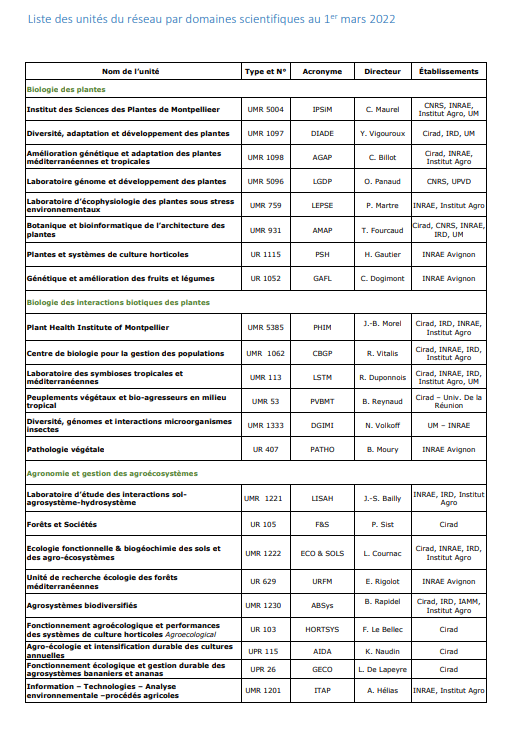
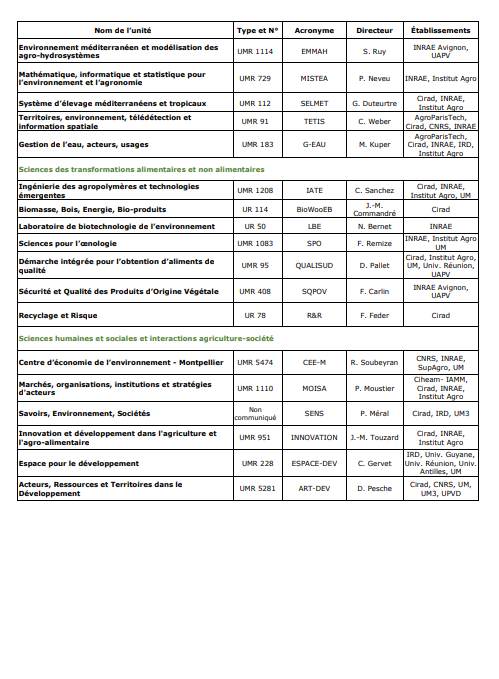
En 2019, Agropolis Fondation a réactualisé sa stratégie, avec l’appui de ses membres fondateurs, de sa communauté scientifique et de ses partenaires. Pour être en phase avec les enjeux majeurs des Objectifs du développement durable et mieux répondre aux grands enjeux de la transition agroécologique, trois axes transversaux ont été définis à l’issue d’une réflexion collective
Axe 1 : Agriculture et changement climatique : adaptation et atténuation
L’objectif est de comprendre les effets du changement climatique sur les systèmes agricoles (des gènes aux paysages, du niveau local au niveau international, et du court terme au long terme) et d’explorer et proposer des stratégies d’adaptation et des mesures d’atténuation. Parmi les questions clés, on peut citer les suivantes :
- les stress biotiques et abiotiques interactifs sur les plantes, les animaux et les autres organismes vivants, et risques associés à des facteurs politiques, sociaux et économiques ;
- la co-viabilité et les co-avantages des écosystèmes sociaux et agricoles, les synergies, les tensions et les compromis ;
- la vulnérabilité et la résilience des territoires : outils, pratiques, stratégies, politiques ;
- le renforcement de l’intégration entre les cultures et l’élevage.
Axe 2 : Conservation et utilisation durable de la biodiversité
L’objectif est de documenter et d’analyser les mesures et les politiques qui soutiennent la conservation et promeuvent l’utilisation durable de la biodiversité dans divers agroécosystèmes. Parmi les questions clés, on évoquera les thèmes suivants :
- les liens entre les fonctions biophysiques et la biodiversité : étude du microbiote, associations culturales, biodiversité sauvage, domestique, améliorée et hybride, etc ;
- l’agrobiodiversité à travers ses fonctions écologiques, économiques et socioculturelles ;
- les études comprenant des conditions contrôlées, des expériences de terrain et des agrosystèmes réels ;
- les interactions entre la biodiversité, la sécurité alimentaire et la santé des plantes ;
- Les politiques (de la conservation à l’exploitation, de l’échelle locale à l’échelle internationale) sur les pratiques et les territoires : régime foncier, droits d’utilisation et d’accès, zones protégées, utilisation/gestion durable, compensation de la biodiversité, paiement pour services écosystémiques, etc.
Axe 3 : Production et consommation responsables
L’objectif est de contribuer à assurer un système alimentaire durable en s’orientant vers une production et une consommation plus responsables. Parmi les questions clés, les thèmes suivants :
- les environnements alimentaires : paysages alimentaires, déserts alimentaires, marécages alimentaires ;
- la co-conception des agro-écosystèmes avec les parties prenantes (par exemple, les agriculteurs, les décideurs politiques, les experts, etc ;)
- la gouvernance des systèmes alimentaires durables (certification et qualité de la production, systèmes publics)
- la réglementation, le rôle des entreprises, la coordination sectorielle ;
- la bio-économie en économie circulaire dans les systèmes alimentaire et non alimentaire, comprenant entre autres une gestion efficace des déchets et des ressources ;
- les protéines animales et/ou végétales (transition alimentaire) ;
- l’innovation et la transition socio-écologique.
Chaque année, les projets soutenus par la Fondation sont sources de publications scientifiques de très haut niveau. Cette rubrique vise à mettre en avant les articles issus de projets soutenus par la Fondation parus dans des revues à haut facteur d’impact. Nous la mettrons à jour annuellement.
En 2020, les onze meilleures publications parues dans des revues à haut facteur d’impact sont les suivantes :
- 1. Rhone B., Defrance D., Berthouly-Salazar C., Mariac C., Cubry P., Couderc M., Dequincey A., Assoumanne A., Kane
NA., Sultan B., Barnaud A., Vigouroux Y., 2020, Pearl millet genomic vulnerability to climate change in West Africa highlights the need for regional collaboration, Nature Communications, 11 (5274).
Abstract
Climate change is already affecting agro-ecosystems and threatening food security by reducing crop productivity and increasing harvest uncertainty. Mobilizing crop diversity could be an efficient way to mitigate its impact. We test this hypothesis in pearl millet, a nutritious staple cereal cultivated in arid and low-fertility soils in sub-Saharan Africa. We analyze the genomic diversity of 173 landraces collected in West Africa together with an extensive climate dataset composed of metrics of agronomic importance. Mapping the pearl millet genomic vulnerability at the 2050 horizon based on the current genomic-climate relationships, we identify the northern edge of the current areas of cultivation of both early and late flowering varieties as being the most vulnerable to climate change. We predict that the most vulnerable areas will benefit from using landraces that already grow in equivalent climate conditions today. However, such seed-exchange scenarios will require long distance and trans-frontier assisted migrations. Leveraging genetic diversity as a climate mitigation strategy in West Africa will thus require regional collaboration.
- 2. Abrouk M., Ahmed HI., Cubry P., Simonikova D., Cauet S., Pailles Y., Bettgenhaeuser J., Gapa L., Scarcelli N.,
Couderc M., Zekraoui L., Kathiresan N., Cizkova J., Hribova E., Dolezel J., Arribat S., Berges H., Wieringa JJ., Gueye
M., Kane NA., Leclerc C., Causse S., Vancoppenolle S., Billot C., Wicker T., Vigouroux Y., Barnaud A., Krattinger SG.,
2020, Fonio millet genome unlocks African orphan crop diversity for agriculture in a changing climate, Nature Communications, 11 (4488).
Abstract
Sustainable food production in the context of climate change necessitates diversification of agriculture and a more efficient utilization of plant genetic resources. Fonio millet (Digitaria exilis) is an orphan African cereal crop with a great potential for dryland agriculture. Here, we establish high-quality genomic resources to facilitate fonio improvement through molecular breeding. These include a chromosome-scale reference assembly and deep re-sequencing of 183 cultivated and wild Digitaria accessions, enabling insights into genetic diversity, population structure, and domestication. Fonio diversity is shaped by climatic, geographic, and ethnolinguistic factors. Two genes associated with seed size and shattering showed signatures of selection. Most known domestication genes from other cereal models however have not experienced strong selection in fonio, providing direct targets to rapidly improve this crop for agriculture in hot and dry environments.
- 3. Long YC., Cheddadi I., Mosca G., Mirabet V., Dumond M., Kiss A., Traas, J., Godin C., Boudaoud A, 2020, Cellular Heterogeneity in Pressure and Growth Emerges from Tissue Topology and Geometry, Current Biology, 30.
Abstract
Cell-to-cell heterogeneity prevails in many systems, as exemplified by cell growth, although the origin and function of such heterogeneity are often unclear. In plants, growth is physically controlled by cell wall mechanics and cell hydrostatic pressure, alias turgor pressure. Whereas cell wall heterogeneity has received extensive attention, the spatial variation of turgor pressure is often overlooked. Here, combining atomic force microscopy and a physical model of pressurized cells, we show that turgor pressure is heterogeneous in the Arabidopsis shoot apical meristem, a population of stem cells that generates all plant aerial organs. In contrast with cell wall mechanical properties that appear to vary stochastically between neighboring cells, turgor pressure anticorrelates with cell size and cell neighbor number (local topology), in agreement with the prediction by our model of tissue expansion, which couples cell wall mechanics and tissue hydraulics. Additionally, our model predicts two types of correlations between pressure and cellular growth rate, where high pressure may lead to fasteror slower-than-average growth, depending on cell wall extensibility, yield threshold, osmotic pressure, and hydraulic conductivity. The meristem exhibits one of these two regimes, depending on conditions, suggesting that, in this tissue, water conductivity may contribute to growth control. Our results unravel cell pressure as a source of patterned heterogeneity and illustrate links between local topology, cell mechanical state, and cell growth, with potential roles in tissue homeostasis.
- 4. Baccour M., Lamotte A., Sakai K., Dubreucq E., Mehdi A., Kano K., Galarneau A., Drone J., Brun N., 2020, Productionnof formate from CO(2)gas under ambient conditions : towards flow-through enzyme reactors, Green chemistry, 22.
Abstract
A flow-through bi-enzymatic reactor was developed to produce formate from carbon dioxide gas (CO2). The reaction operates under ambient conditions without hydrogen gas (H2) and involves a high performance formate dehydrogenase from Methylobacterium extorquens AM1 (MeFoDH1). The tandem reaction features in situ regeneration of the nicotinamide adenine dinucleotide (1,4-NADH) cofactor performed by a highly active mutant of the phosphite dehydrogenase from Pseudomonas stutzeri, without any side reaction. One of the highest turnover numbers reported to date in the literature was reached (6700) giving a high space–time yield of 0.6 mmolformate min−1 L−1reactor.
- 5. Manzano-Marin A., d’Acier AC., Clamens AL., Orvain C., Cruaud C., Barbe V., Jousselin E., 2020, Serial horizontal transfer of vitamin-biosynthetic genes enables the establishment of new nutritional symbionts in aphids’ disymbiotic systems, ISME Journal, 14.
Abstract
Many insects depend on obligate mutualistic bacteria to provide essential nutrients lacking from their diet. Most aphids, whose diet consists of phloem, rely on the bacterial endosymbiont Buchnera aphidicola to supply essential amino acids and B vitamins. However, in some aphid species, provision of these nutrients is partitioned between Buchnera and a younger bacterial partner, whose identity varies across aphid lineages. Little is known about the origin and the evolutionary stability of these di-symbiotic systems. It is also unclear whether the novel symbionts merely compensate for losses in Buchnera or carry new nutritional functions. Using whole-genome endosymbiont sequences of nine Cinara aphids that harbour an Erwinia-related symbiont to complement Buchnera, we show that the Erwinia association arose from a single event of symbiont lifestyle shift, from a free-living to an obligate intracellular one. This event resulted in drastic genome reduction, long-term genome stasis, and co-divergence with aphids. Fluorescence in situ hybridisation reveals that Erwinia inhabits its own bacteriocytes near Buchnera’s. Altogether these results depict a scenario for the establishment of Erwinia as an obligate symbiont that mirrors Buchnera’s. Additionally, we found that the Erwinia vitamin-biosynthetic genes not only compensate for Buchnera’s deficiencies, but also provide a new nutritional function ; whose genes have been horizontally acquired from a Sodalis-related bacterium. A subset of these genes have been subsequently transferred to a new Hamiltonella co-obligate symbiont in one specific Cinara lineage. These results show that the establishment and dynamics of multi-partner endosymbioses can be mediated by lateral gene transfers between co-ocurring symbionts.
- 6. Akakpo R., Carpentier MC., Ie Hsing Y., Panaud O., 2020, The impact of transposable elements on the structure, evolution and function of the rice genome, New Phytologist, 226.
Abstract
Transposable elements (TEs) are ubiquitous in plants and are the primary genomic component of the majority of taxa. Knowledge of their impact on the structure, function and evolution of plant genomes is therefore a priority in the field of genomics. Rice, as one of the most prevalent crops for food security worldwide, has been subjected to intense research efforts over recent decades. Consequently, a considerable amount of genomic resources has been generated and made freely available to the scientific community. These can be exploited both to improve our understanding of some basic aspects of genome biology of this species and to develop new concepts for crop improvement. In this review, we describe the current knowledge on how TEs have shaped rice chromosomes and propose a new strategy based on a genome‐wide association study (GWAS) to address the important question of their functional impact on this crop.
- 7. Buergy A., Rolland-Sabate A., Leca A., Renard,CMGC., 2020, Pectin modifications in raw fruits alter texture of plant cell dispersions, Food Hydrocolloids, 107 (105962).
Abstract
The texture of pureed fruits and vegetables depends primarily on the original tissue structure and cell wall (CW) properties. However, how variations in the raw fruits’ cellular and molecular structure determine the rheological behaviour of the purees is little understood, though pectin degradation appears to play a key role. Cultivars, fruit load and post-harvest storage were used to obtain raw apples with different tissue structures, which were processed into purees under simulation of an industrial process. The rheological behaviour of the purees was then compared to particle size, pulp wet mass and serum viscosity. The polysaccharide composition of soluble and insoluble CW material were determined after preparation of alcohol insoluble residue. Macromolecular size and molar mass distributions of soluble pectins were analysed using high performance size-exclusion chromatography coupled to multi-angle laser light scattering and online viscometry. Variations in the raw material, especially induced by post-harvest storage, generated a wide range of different puree’s textures. Rheological behaviour of apple purees was driven by particle size, which decreased during prolonged post-harvest storage due to reduced cell adhesion. This was correlated with pectic side chain hydrolysis and modifications in pectin molar mass and structure. Similar trends during storage were observed with different apple cultivars and agricultural practices.
- 8. Martins L., Knuesting J., Bariat L., Dard A., Freibert SA., Marchand CH., Young D., Dung NHT., Voth W., Debures A., Saez-Vasquez J., Lemaire SD., Lill R., Messens J., Scheibe R., Reichheld JP., Riondet C.,2020, Redox Modification of the Iron-Sulfur Glutaredoxin GRXS17 Activates Holdase Activity and Protects Plants from Heat Stress, Plant Physiology, 184.
Abstract
Heat stress induces misfolding and aggregation of proteins unless they are guarded by chaperone systems. Here, we examined the function of the glutaredoxin GRXS17, a member of thiol reductase families in the model plant Arabidopsis (Arabidopsis thaliana). GRXS17 is a nucleocytosolic monothiol glutaredoxin consisting of an N-terminal thioredoxin domain and three CGFS active-site motif-containing GRX domains that coordinate three iron-sulfur (Fe-S) clusters in a glutathione-dependent manner. As an Fe-S cluster-charged holoenzyme, GRXS17 is likely involved in the maturation of cytosolic and nuclear Fe-S proteins. In addition to its role in cluster biogenesis, GRXS17 presented both foldase and redox-dependent holdase activities. Oxidative stress in combination with heat stress induced loss of its Fe-S clusters followed by subsequent formation of disulfide bonds between conserved active-site cysteines in the corresponding thioredoxin domains. This oxidation led to a shift of GRXS17 to a high-molecular-weight complex and thus activated its holdase activity in vitro. Moreover, GRXS17 was specifically involved in plant tolerance to moderate high temperature and protected root meristematic cells from heat-induced cell death. Finally, GRXS17 interacted with a different set of proteins upon heat stress, possibly protecting them from heat injuries. Therefore, we propose that the Fe-S cluster enzyme GRXS17 is an essential guard that protects proteins against moderate heat stress, likely through a redox-dependent chaperone activity. We reveal the mechanism of an Fe-S cluster-dependent activity shift that converts the holoenzyme GRXS17 into a holdase, thereby preventing damage caused by heat stress.
- 9. da Silveira JS., Mertz C., Morel G., Lacour S., Belleville MP., Durand N., Dornier M., 2020, Alcoholic fermentation as a potential tool for coffee pulp detoxification and reuse : Analysis of phenolic composition and caffeine content by HPLC-DAD-MS/MS, Food Chemistry, 319 (126600).
Abstract
High-performance liquid chromatography with diode array (HPLC-DAD) and liquid chromatograph triple quadrupole mass spectrometry (HPLC-MS/MS) were used to characterize raw and fermented coffee pulps in terms of their phenolic composition and caffeine content. The qualitative analysis showed no significant differences between the raw and the fermented pulps. Free hydroxycinnamic acids (HAs) were mainly chlorogenic acids, with 5-caffeoylquinic acid as the major compound. Bound HAs released caffeic acids during alkaline hydrolysis, and no bound ferulic and p-coumaric acids were detected. The fermentation process allowed the detoxification of the pulp from caffeine by 50%, while significantly reducing the amounts of residue by 64%. Moreover, the fermented products could be further processed to provide high added-value molecules with potential industrial applications, providing a new source of income for the small coffee producers.
- 10. Lan WJ., Jaillais B., Leca A., Renard CMGC., Bureau S., 2020, A new application of NIR spectroscopy to describe and predict purees quality from the non-destructive apple measurements, Food Chemistry, 310 (125944).
Abstract
The potential of NIRS was investigated on both apples and purees to (i) examine factors involving quality variability (variety, agricultural practice, cold storage, puree mechanical refining level) and (ii) establish the link between quality traits before and after processing in order to predict the quality characteristics of purees from spectral information of raw apples. Apples and purees were well-classified at over 82% and 88% according to varieties and storage times respectively. The PLS models showed a good ability to estimate puree characteristics from spectra acquired on corresponding apples such as viscosity (R2 > 0.82), cell wall content (R2 > 0.81) and also dry matter (R2 > 0.83), soluble solids content (R2 > 0.80) and titratable acidity (R2 > 0.80). NIR technique should be a useful tool for industry insofar as it can give a reliable assessment of texture and taste of the final products based on the non-destructive fresh materials evaluation.
- 11. Lan WJ., Renard CMGC., Jaillais B., Leca A., Bureau S., 2020, Fresh, freeze-dried or cell wall samples : Which is the most appropriate to determine chemical, structural and rheological variations during apple processing using ATRFTIR spectroscopy ?, Food Chemistry, 330 (127357).
Abstract
Attenuated total reflectance Fourier transform spectroscopy (ATR-FTIR) was applied on fresh (NF), freeze-dried (FD) and cell wall materials (AIS) of raw and processed apples. These samples prepared from 36 apple sets and the corresponding 72 purees, issued from different varieties, agricultural practices, storage periods and processing conditions, were used to build models including exploratory analysis, supervised classification and multivariate calibration. Fresh and freeze-dried samples presented similar fingerprint spectral variations due to processing. ATR-FTIR directly on fresh purees satisfactorily predicted textural properties such as particle average size and volume (RPD > 3.0), while freeze-drying improved assessment of chemical (RPD > 3.2) and rheological (RPD > 3.1) parameters using partial least-squares regression. The assessment of texture and macrocomponents of purees can be obtained with a limited sample preparation. For research applications because of a need of sample preparation, changes of cell wall composition during fruit processing could be assessed in relationship with pectin degradation.


